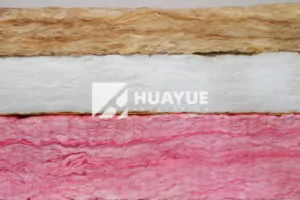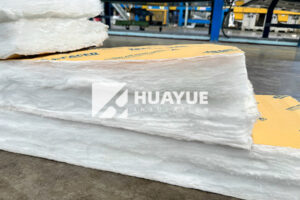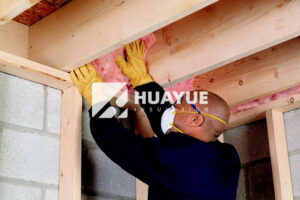What is the R-value of Batt Fiberglass?
Batt fiberglass insulation can deliver strong thermal resistance, but real R-value depends on installation. If you compress fiberglass to fit smaller spaces, R-value drops, potentially wasting energy and money.
The typical R-value of HUAYUE batt fiberglass insulation ranges from R-11 to R-49, depending on its labeled thickness and how it is installed. Compression of batts lowers the actual R-value below the product’s label.

Everyone wants to maximize insulation performance for comfort and energy savings. Yet in real-world construction, insulation is often squeezed or forced into tight spaces. This affects how well batt fiberglass does its job. Let’s look at the R-values you can expect from HUAYUE batt fiberglass, and how to avoid common mistakes.
How does compression affect the R-value of batt fiberglass?
Even the best insulation fails if compressed. Squeezing batt fiberglass to fit smaller cavities traps less air, which is vital for insulation. This can cause heat loss and higher bills.
When HUAYUE batt fiberglass is compressed, it loses some of its labeled R-value. If you install an R-21 batt in a space meant for R-13, the R-value drops closer to that of an R-13 batt. Always check framing depth and follow guidelines to maintain performance.
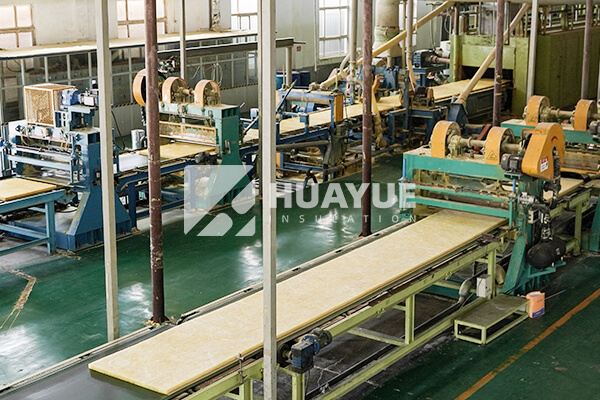
The Science of Compression
Insulation works by trapping air pockets within fibers. When properly fitted, HUAYUE batt fiberglass forms a loose, fluffy layer. If you press it too tightly into a cavity, these air pockets shrink. That miniaturizes insulation’s ability to resist heat flow, dropping R-value. In my experience, this happens when installers try to squeeze thicker batts into shallow wall cavities—especially in older buildings. For example, placing an R-21 (5.5-inch) fiberglass batt into a 3.5-inch space compresses it down to about R-14 or R-15. This means you pay for higher R-value but only get a fraction of the performance.
Below is a simple reference table (source: HUAYUE manufacturer data):
| Cavity Depth | Labeled R-Value | Estimated R-Value (After Compression) |
|---|---|---|
| 3.5" (2×4 stud) | R-21 | R-15 |
| 5.5" (2×6 stud) | R-21 | R-21 |
| 6" (metal stud) | R-21 | R-21 |
| 7.25" (2×8 stud) | R-25 | R-24-25 |
For best results, select batt thickness that matches cavity depth. Avoid compressing insulation whenever possible. This ensures comfort, safety, and energy savings.
What are best practices for installing HUAYUE batt fiberglass insulation?
Proper installation lets you enjoy full energy savings and comfort. Installers face pressure to speed up work, but even small errors lower R-value and increase future problems.
To keep R-value high, HUAYUE recommends always matching batt thickness to the stud or joist space. Measure cavities before buying insulation. Place the batts gently; do not squish or split them. Avoid gaps, folds, and excessive handling. If you must trim a batt to fit, use a sharp utility knife along a firm straightedge so edges stay tight and square. Do not stuff batts behind pipes or wires, as this leaves air pockets and thermal short circuits.
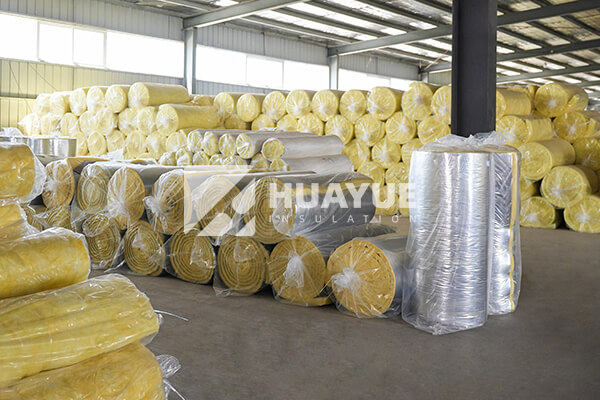
Step-by-Step Installation Advice
I’ve seen projects where ignoring these steps creates cold spots, higher energy costs, and even moisture risks. To get full R-value from HUAYUE fiberglass batts, here is the straightforward approach:
- Check the cavity width and depth. Select batts that closely match.
- Press each batt gently into place. It should fill the space with no sagging or compression.
- Cut around obstructions so the insulation fits snugly.
- Seal small gaps with extra insulation, not by cramming batts into place.
- Inspect finished work for voids, folds, or “shoved” sections.
Quality installation can turn HUAYUE insulation into a powerful shield against heat, cold, and even noise. Poor installation wastes the investment and leads to callbacks.
Can insulation be compressed in special situations?
Sometimes installers or inspectors must compress insulation, but knowing the impact is vital. Not every site will allow ideal conditions, so judgment and clear communication are key.
If you have to compress HUAYUE batt fiberglass—maybe to get insulation behind odd piping or inside a nonstandard wall cavity—contact the manufacturer or consult published compression tables. Always note the reduced R-value for code compliance and inspection reports. Do not estimate or extrapolate R-value changes; small variations can make a big difference.
Real-World Scenarios for Compression
In my years working on retrofit projects, I’ve seen tight corners in utility rooms, retrofit attic spaces, and older walls that simply do not fit standard batt thickness. In these cases, communication with the inspector and project owner is essential. If you compress a batt, document the expected new R-value. For critical cold-climate or high-humidity applications, consider switching to rigid board or spray foam insulation, which do not need compression and keep their R-value even in tight spots.
Remember: No matter the situation, actual field performance trumps what’s on the label. As Hans Müller once told me, “It’s not just about ticking a box for the code—it’s making sure the tank or wall truly does its job in the real world.”
Conclusion
HUAYUE batt fiberglass insulation offers high R-value when installed correctly. Compression reduces performance. Choose the right thickness for each cavity to keep energy bills low and comfort high.
You may also be interested in:
Ready to Get Started?
Get in touch with our experts for personalized solutions tailored to your needs.
Get Free QuoteLatest Articles
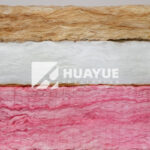
Eco Batt Insulation: What You Need to Know?
Dec 12, 2025
Let's Work Together
Ready to take your business to the next level? Get in touch with our team of experts and let's discuss how we can help you achieve your goals.
Get Free Solutions
